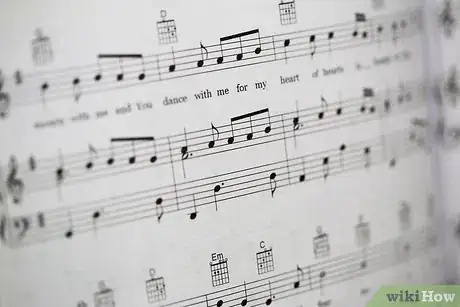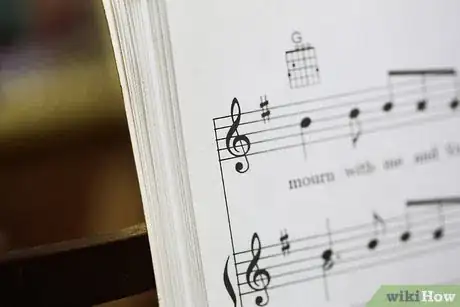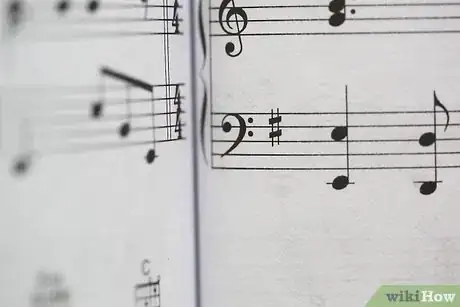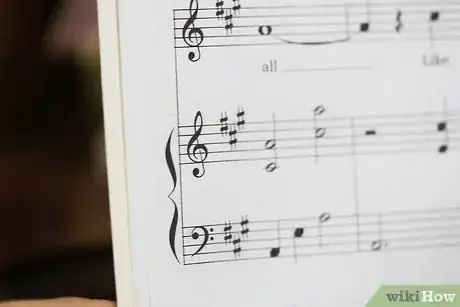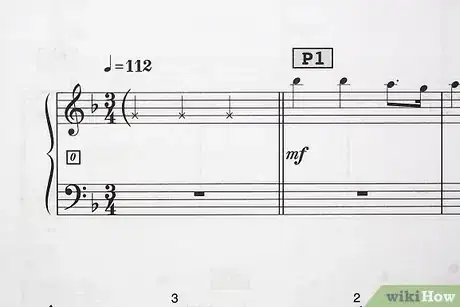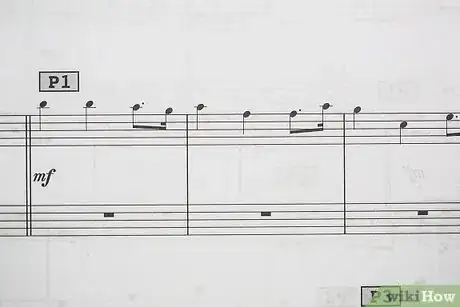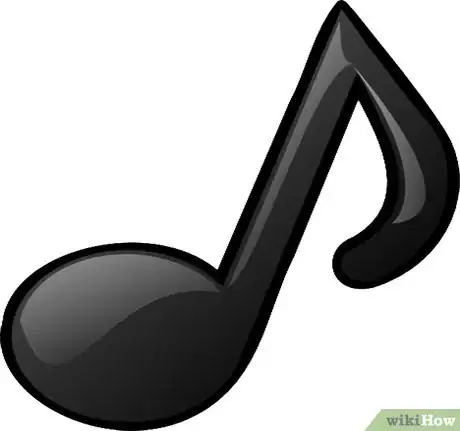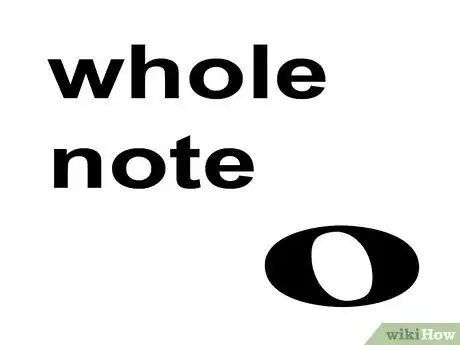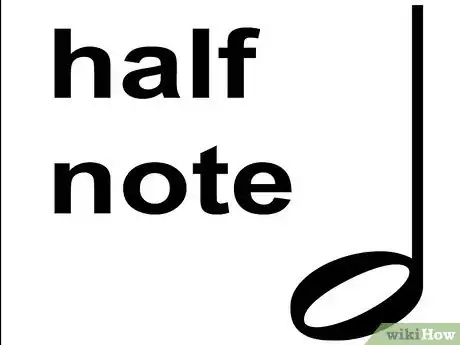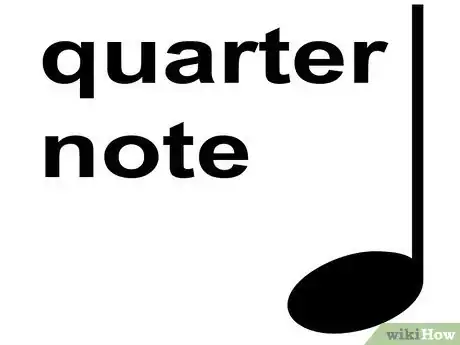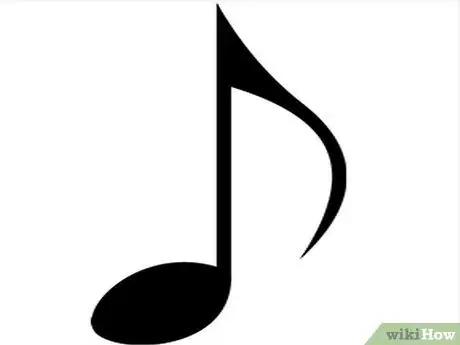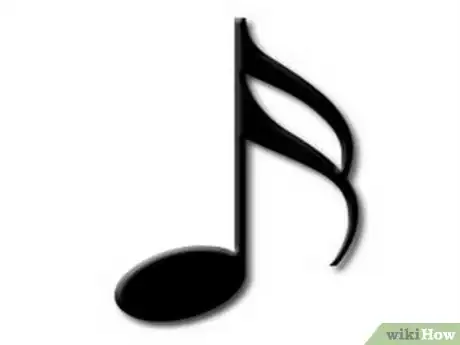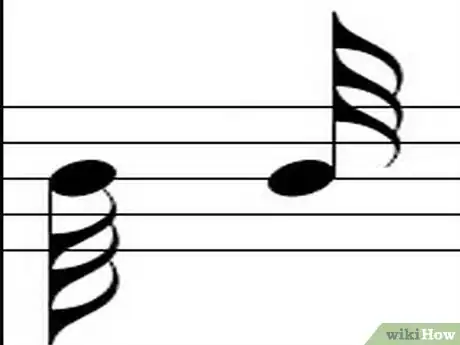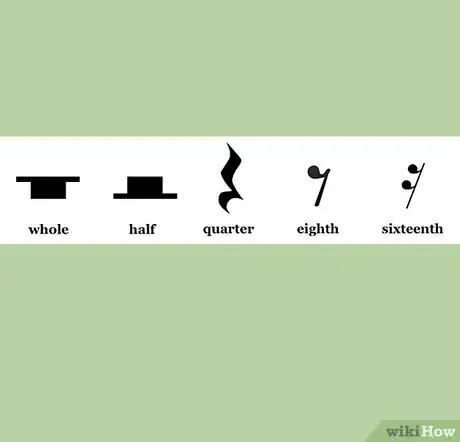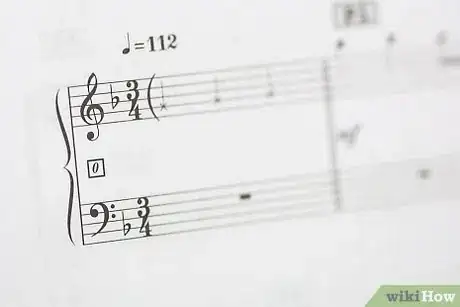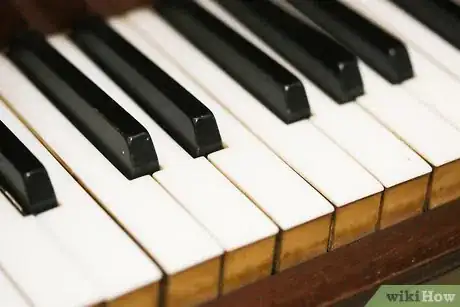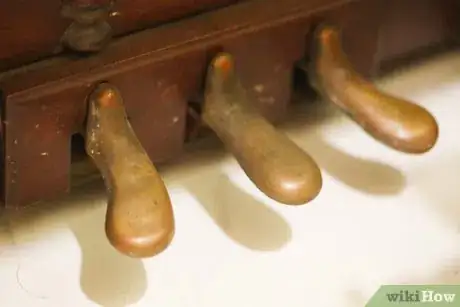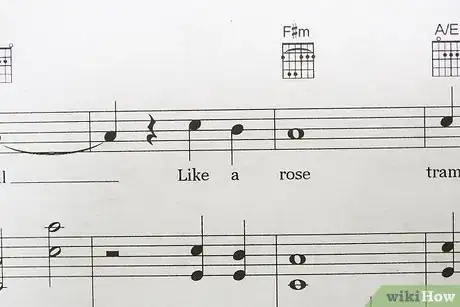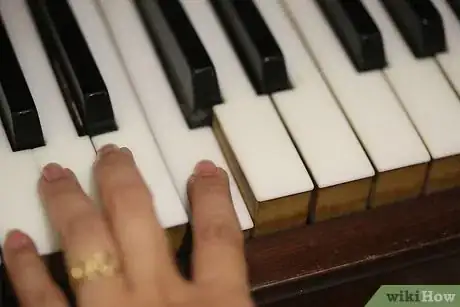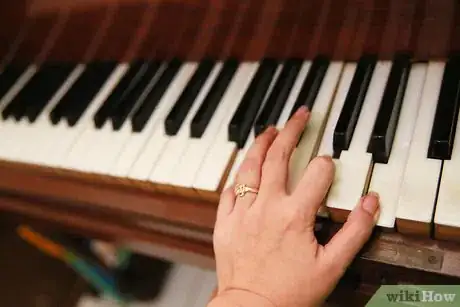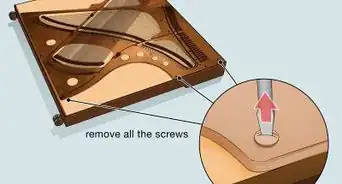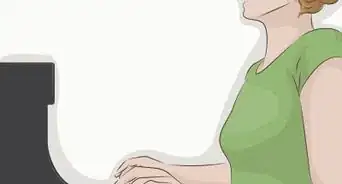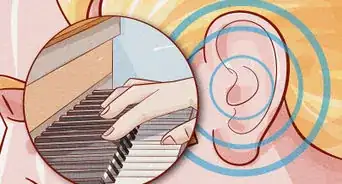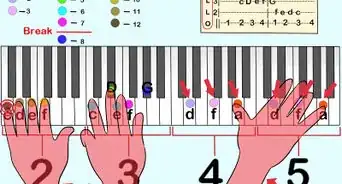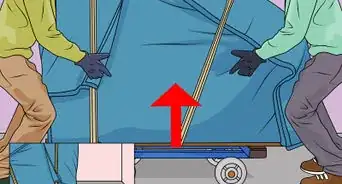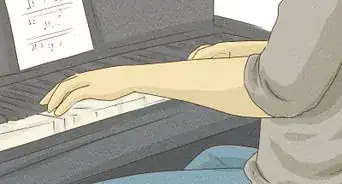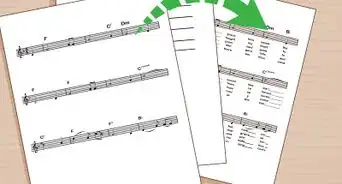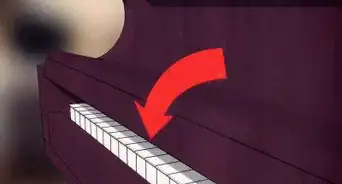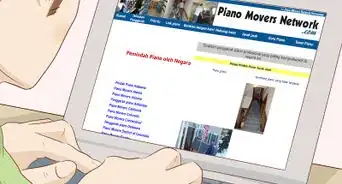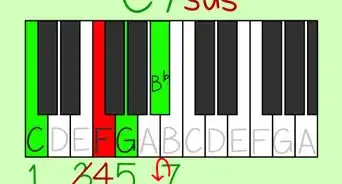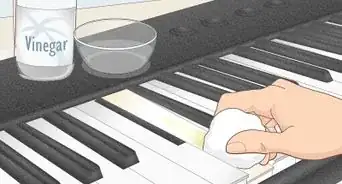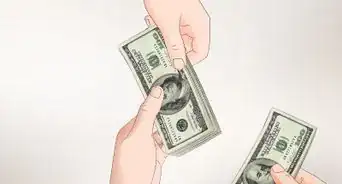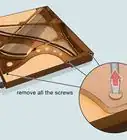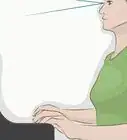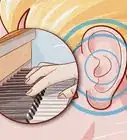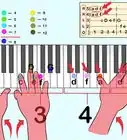wikiHow is a “wiki,” similar to Wikipedia, which means that many of our articles are co-written by multiple authors. To create this article, 29 people, some anonymous, worked to edit and improve it over time.
There are 14 references cited in this article, which can be found at the bottom of the page.
This article has been viewed 128,255 times.
Learn more...
Learning to play the piano is challenging and takes time but it will be very rewarding. While it is difficult to replace traditional lessons, you can teach yourself to play the piano. Read below for a basic primer on reading piano sheet music to find out more information.
Steps
Learn to Interpret the Staff
-
1Recognize lines and spaces. When you look at sheet music, you will see five lines with four spaces between them. These are collectively called the staff. Both the lines and the spaces are used as locations for notes, and where on those notes fall determines the pitch of the note.[1] What pitch is assigned to the line or space is determined by the clef, discussed below.
- Lines and spaces can also be created above and below the normal five by drawing short lines as needed to indicate the note.
-
2Recognize clefs. Clefs are different shapes, located at the very beginning of a music staff, which tell you what pitches are on what line or space of the staff. They are usually recognizable because they are large and cover all five lines. Although several clefs exist, you will only need to know two for reading piano music:[2]
- A treble clef or G-clef is the clef or symbol you will usually see associated with music, so it should look familiar. It looks vaguely similar to an ampersand (or “&” symbol). The lines, from the bottom up to the top, indicate the following pitches: E,G,B,D, and F. The spaces, from the bottom up to the top, indicate the following pitches: F, A, C, and E.
- There are some mnemonics to help you remember the notes. For the lines on the treble clef, think of the sentence “Every Good Boy Does Fine”, and for the spaces, think of the word “FACE”.[3]
- A bass clef or F-clef looks a little like a backward c with two dots behind the arc. The lines, from the bottom up to the top, indicate the following pitches: G,B,D, F, and A. The spaces, from the bottom up to the top, indicate the following pitches: A, C, E, and G.
- There are some mnemonics to help you remember the notes, For the lines in the bass clef, think if the sentence “Good Boys Deserves Fudge Always”, and for the spaces, think of “All Cows Eat Grass”.[4]
Advertisement -
3Recognize key signature. The key signature tells you which notes get changed. The whole or normal pitches are labeled with letters (ABCDEFG), but there are also half-steps between those notes which are indicated with either a # (sharp) or a b (flat). The sharps and flats located at the beginning of the staff show the key signature and the lines or space on which they fall indicate that any note which falls in that place is played with either that sharp or flat.[5]
- Extra sharps and flats can always be placed within the music as well and will be placed next to the note they alter.
- Sharp means the pitch goes up, while b means the pitch goes down.
- The sharp of one note is the same as the flat of the next note up.
- Sharps and flats are indicated by the black keys on your piano. This is discussed below.
-
4Recognize the time signature. The time signature, indicated by two numbers at the beginning of the staff, tell you how many beats a note gets. The bottom number indicates what type of note gets one beat (which number corresponds to which note is indicated below) and the top number indicates how many of those are in one bar of music.[6]
-
5Recognize measures. When you look at the staff, you will see occasional vertical lines drawn through the horizontal lines of the staff. The space between these lines is called the measure. Think of the measure as a musical sentence, and the line as the period at the end of that sentence (though it does not mean you should pause before starting the next). Measures help break up the music and work with the time signature to tell you how many beats to give to a note.[7]
Learn to Interpret the Notes
-
1Recognize parts of a note. Notes consist of several parts. Like the lines and circles that make up the written English language, the lines and circle of the notes change how that note functions in its musical sentence. Understand the parts of notes in order to understand how they sound.[8]
- The head is the round part of the note. It can look like an open circle or a closed dot. The location of the head indicates what pitch the note should be.
- The stem is the line which it attached to the head. It can point up or down, it does not affect the music (it is only determined by where on the lines the note is located).
- The flag is the little tail which you may see coming from the end of the stem. There can be one flag or two.
-
2Recognize the types of notes. There are several common types of notes which are made by changing different things about the parts that make up a note. There are also rests, which indicate that no sound is played for a certain period of time. Here is a list of the most common notes:[9]
- A Whole Note: A whole note is indicated by an open head with no stem. These are indicated with a 1 in the time signature.
- A Half Note: A half note is indicated by an open head with a stem. These are indicated with a 2 in the time signature.
- A Quarter Note: A quarter note is indicated by a closed head with a stem. These are indicated with a 4 in the time signature.
- An Eighth Note: An eighth note is indicated by a closed head with a stem and one flag.These are indicated with an 8 in the time signature.
- A Sixteenth Note: A sixteenth note is indicated by a closed head with a stem and two flags.
- Joined Notes: Eighth and sixteenth, triplets etc. notes can be joined together by turning the flags into a bar which spans between them. These are indicated with a 16 in the time signature.
-
3Recognise rests. Quarter rests look like a squiggle. Eighth rests look like a diagonal line with one tail, while sixteenth rests have two tails. Whole rests look like a bar in the upper half of the middle space, while half rests are in the lower portion.[10]
Learn to Play the Music
-
1Recognise left hand and right hand lines. When you look at piano sheet music, you will see that there are two staffs which are attached at the beginning of each line and at the measures. These two lines indicate which hand plays which notes. The upper staff indicates the notes played with the right hand and the lower staff indicates which notes are played with the left.[11]
-
2Recognize the pitches on your piano. Each key, both white and black, represents a particular pitch and like the repeated pattern of the keys, the pitches also repeat. Look at your piano and you will see two black keys close together and then three black keys close together. Starting with the first of the two keys and moving to the very next key (including white notes) the pitches are: C#/Db, D, D#/Eb, E, F, F#/Gb, G, G#/Ab, A, A#/Bb, B, and C. The bolded text indicates a black key.[12]
- Labeling the keys while you learn may be helpful.
-
3Use the pedals when indicated. You may see pedals at your feet if using a proper piano, rather than a keyboard.[13] The left pedal is called the “soft” pedal, the middle pedal is called the “sostenuto” pedal, and the right pedal is called the “sustain” or “damper” pedal. When to use the most common pedal, the sustain pedal, is indicated on the sheet music:
- The sustain pedal should be pressed when the word “Ped.” is written below a note and released when you see a star. Alternatively, you may see horizontal, vertical, or angled lines together. A horizontal line means to press the pedal, an angle means a brief release, and a vertical line means to release the pedal.
-
4Read the lines of music. Reading music is just like reading a language.[14] Think of the staff as the sentence and the notes as the letters. Put your knowledge of the staff together with your knowledge of the notes and begin to play the music that you see on the page. You won’t be very good at first but you will get better and better as you get more experience.
-
5Go slowly. When first learning to play piano, play slowly. Over time you hands will get used to the movements and it will be easier to play without looking at your hands constantly. Play songs very slowly until you are comfortable and ready to speed it up.[15]
-
6Practice. Reading and playing music smoothly and correctly takes time and practice. Don’t be discouraged if you don’t get it right away. If it was an easy skill to pick up, people wouldn’t be so impressed when you’re good at it! Practice every day and get help when you can.
- A music teacher at your school may be able to help you learn to play the piano. You can also ask members of your community, such as people at your church, if they’d be willing to help you.
- If you really struggle, consider taking a class. These classes don’t need to be expensive. Many piano students at your local university will offer discounted lessons and local community centers will sometimes offer cheap courses.
Community Q&A
-
QuestionWhy are there two notes on top of each other on the same stave?
 Community AnswerBecause you will have to play both of those notes. You will often need to play multiple notes at a time when playing the piano.
Community AnswerBecause you will have to play both of those notes. You will often need to play multiple notes at a time when playing the piano. -
QuestionIf the stem is facing down is that left hand plays?
 I.P.Community AnswerNo. It is just to make it so that the entire note fits on the staff. The lower line is the left hand.
I.P.Community AnswerNo. It is just to make it so that the entire note fits on the staff. The lower line is the left hand. -
QuestionHow do I know what's sharp or flat when the symbol is on the side, like behind the time signature?
 Community AnswerB E A D G C F is the order of flats. Sharps are the complete opposite, F C G D A E B. So, let's say you have two flats in your key, then B and E would be flat throughout the piece.
Community AnswerB E A D G C F is the order of flats. Sharps are the complete opposite, F C G D A E B. So, let's say you have two flats in your key, then B and E would be flat throughout the piece.
References
- ↑ https://en.wikipedia.org/wiki/Staff_(music)
- ↑ https://www.musicnotes.com/now/tips/a-complete-guide-to-musical-clefs-what-are-they-and-how-to-use-them/
- ↑ https://rockhill.instructure.com/courses/328/pages/treble-clef-and-bass-clef
- ↑ https://rockhill.instructure.com/courses/328/pages/treble-clef-and-bass-clef
- ↑ http://musictheoryfundamentals.com/MusicTheory/keySignatures.php
- ↑ https://www.dummies.com/art-center/music/piano/common-music-time-signatures/
- ↑ https://www.dummies.com/art-center/music/piano/musical-punctuation-bar-lines-and-measures/
- ↑ https://www.dummies.com/art-center/music/guitar/how-musical-notes-are-constructed/
- ↑ https://www.essential-music-theory.com/music-note.html
- ↑ https://www.musictheoryacademy.com/how-to-read-sheet-music/rests/
- ↑ https://takelessons.com/blog/reading-piano-notes
- ↑ http://www.playpianomusic.com/pitch-on-the-piano
- ↑ https://www.dummies.com/art-center/music/piano/how-to-use-piano-pedals/
- ↑ https://takelessons.com/blog/reading-piano-notes
- ↑ https://takelessons.com/live/piano/piano-practice-tips
- ↑ https://www.dummies.com/art-center/music/piano/mnemonics-for-piano-notes/
About This Article
To read piano sheet music, start by looking all the way to the left of the lines to see what clef is there. If it's a treble clef, which looks like an ampersand, the notes on the lines from the bottom up are E, G, B, D, and F, and the notes in the spaces from the bottom up are F, A, C, and E. If it's a bass clef, which looks like a backward "c," the notes on the lines from the bottom up are G, B, D, F, and A, and the notes in the spaces from the bottom up are A, C, E, and G. To learn how to interpret the different types of notes you'll find on piano sheet music, scroll down!
